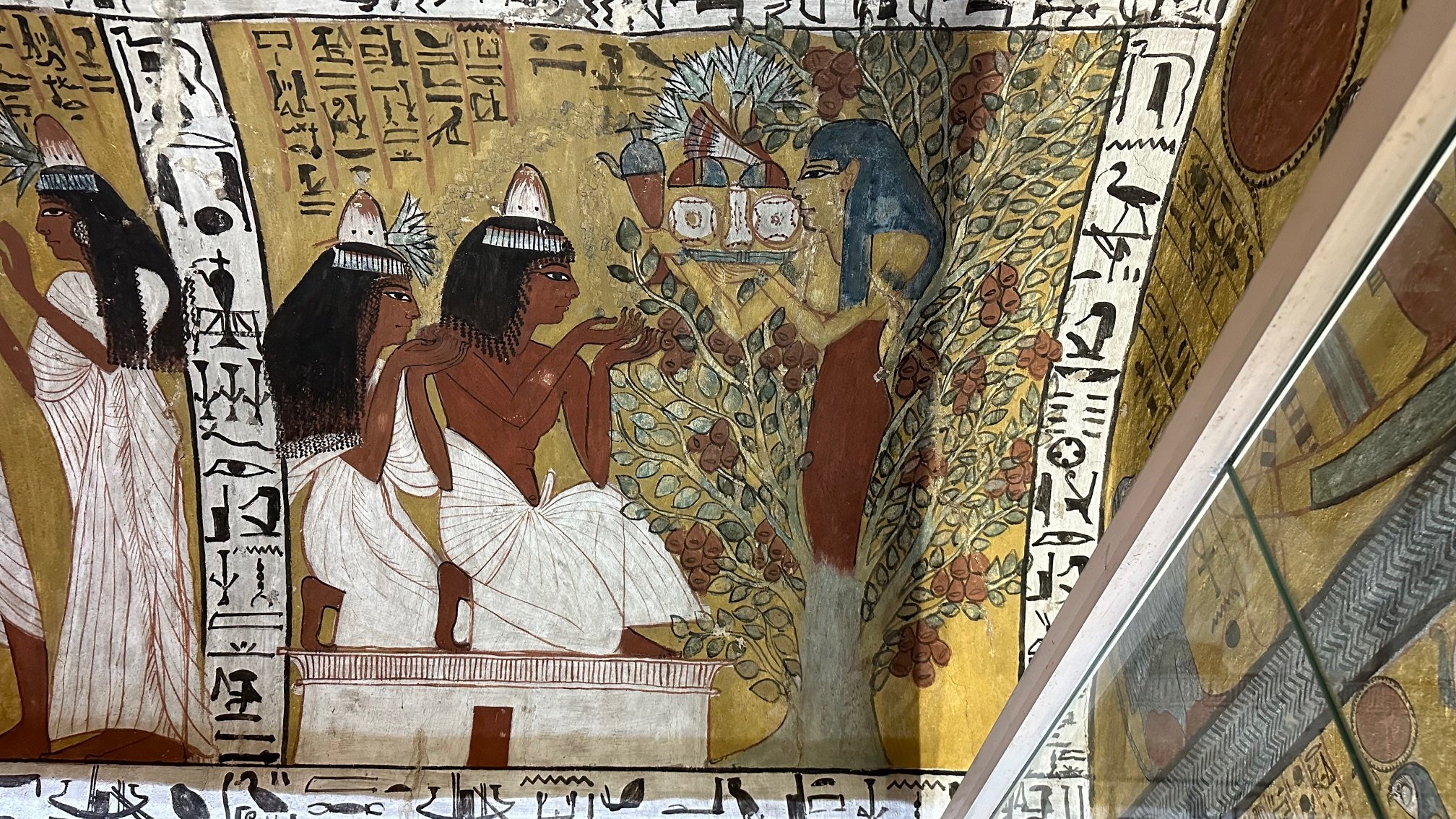
Publications
Egypt’s Golden Couple
by John Darnell and Colleen Darnell
Akhenaten has been the subject of radically different, even contradictory, biographies. The king has achieved fame as the world's first individual and the first monotheist, but others have seen him as an incestuous tyrant who nearly ruined the kingdom he ruled. The gold funerary mask of his son Tutankhamun and the painted bust of his wife Nefertiti are the most recognizable artifacts from all of ancient Egypt. But who are Akhenaten and Nefertiti? And what can we actually say about rulers who lived more than three thousand years ago?
November 2022 marks the centennial of the discovery of the tomb of Tutankhamun and although "King Tut" is a household name, his nine-year rule pales in comparison to the revolutionary reign of his parents. Akhenaten and Nefertiti became gods on earth by transforming Egyptian solar worship, innovating in art and urban design, and merging religion and politics in ways never attempted before.
Combining fascinating scholarship, detective suspense, and adventurous thrills, Egypt's Golden Couple is a journey through excavations, museums, hieroglyphic texts, and stunning artifacts. From clue to clue, renowned Egyptologists John and Colleen Darnell reconstruct an otherwise untold story of the magnificent reign of Akhenaten and Nefertiti.
Two celebrated Egyptologists bring to vivid life the intriguing and controversial reign of King Tutankhamun's parents.
The Great Karnak Inscription of Merneptah
Grand Strategy in the 13th Century BC
The Great Karnak Inscription of Merneptah's 5th regnal year, the longest surviving continuous monumental text from Egypt, describes the combined Libyan and Sea People invasion of Egypt c.1208 BCE. This new study, the first complete commentary on this long but unfortunately damaged text, begins with a translation of the text, accompanied by detailed notes. The study considers specific military aspects of the inscription alongside its religious background. A grammatical analysis of the Great Karnak Inscription also sheds new light on the grammar of Ramesside monumental texts.
The Late Egyptian Underworld
Sarcophagi and Related Texts from the Nectanebid Period
Despite the variety of the temple decoration during the 30. Dynasty, little is known about the theology of funeral rituals and conceptions of the afterlife during the reigns of Nectanebo I and especially during that Nectanebo II. Since the conceptions of the Netherworld during the final period of pharaonic rule has not previously been a topic of detailed study, this thorough examination of sarcophagi and papyri of the Thirtieth Dynasty and early Ptolemaic Period casts new light on the cultural and religious achievements of the Nectanebid Period, particularly in the realm of funerary religion.
Imagining the Past
Historical Fiction in New Kingdom Egypt
Five hundred years before Homer immortalized the Trojan Horse, the ancient Egyptians had already composed a tale of soldiers hiding Ali Baba-like in baskets to capture a besieged city. Shortly after the rise to power of the warrior pharaoh Ramesses II, Egyptian authors began to write stories about battles and conquest. However, these stories were not set in the present, but in the past: they were the world's first works of historical fiction. These literary recreations of past events, which preserve fascinating mixtures of fact and fiction, provide unparalleled information about topics as diverse as ancient Egyptian historiography, religion, and notions of humor and wit.
Tutankhamun’s Armies
Battle and Conquest during Ancient Egypt’s Late 18th Dynasty
In Tutankhamun's Armies, you'll discover the harsh reality behind the imperial splendor of the New Kingdom and gain a new appreciation for the formidable Egyptian army-from pharaoh to foot soldier. You'll follow "the heretic king" Akhenaten, his son Tutankhamun, and their three Amana-Period successors as they employ double-edge diplomacy and military might to defeat competing powers, quell internal insurrections, and keep reluctant subject states in line. This vivid and absorbing chronicle will forever change the way you think about the glories and riches of ancient Egypt.
Echoes of Egypt
Conjuring the Land of the Pharaohs
Echoes of Egypt is a catalog accompanying an exhibit at Yale's Peabody Museum of Natural History. Edited by Colleen Manassa, the catalog also includes entries by international experts. Documenting two thousand years of the reception of ancient Egypt throughout the world, Echoes of Egypt transcends the typical account on Nineteenth and Twentieth Century 'Egyptomania'. The first chapter includes a chronological overview of the exhibit, ranging from ancient Meroe, Greece and Rome, and medieval Arab-Islamic fascination with hieroglyphs to Piranesi's interior designs and the impact of Napoleon's invasion. Additional chapters focus on the meaning and changing uses of hieroglyphs, 'mummy mania', and Egyptosophy. Full color images complement the text.
The Ancient Egyptian Netherworld Books
The first, complete English translation of the ancient Egyptian Netherworld Books
The ancient Egyptian Netherworld Books are among the most extensive religious texts from pharaonic civilization and present humanity's oldest surviving attempts to provide a scientific map of the unseen realms beyond the visible cosmos. First attested during the middle of the second millennium BCE, the Netherworld Books decorate the walls of the New Kingdom royal tombs in the Valley of the Kings. The importance of these texts lies in their philosophical and theological speculations about the inner workings of the cosmos, particularly the events of the solar journey through the twelve hours of the night. These important texts describe one of the central mysteries of Egyptian religious belief, the union of the solar god Re with the underworldly god Osiris, and provide information on aspects of Egyptian theology and cosmography more thoroughly than what is presented in the more widely read Book of the Dead.








